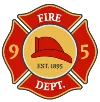Now Reading: Prescribed Burns – A Deep Dive into the Efficacy Lighting
- 01
Prescribed Burns – A Deep Dive into the Efficacy Lighting
Prescribed Burns – A Deep Dive into the Efficacy Lighting

A Deep Dive into the Efficacy of Prescribed Burns: Lighting the Path Forward
In recent times, the menace of wildfires has raised considerable alarms in both the USA and Australia, two countries consistently at the brunt of nature’s fury. Mitigating these fires has become paramount, and one approach making waves is the use of prescribed burns. This review sets out to examine the strategy of prescribed burns, also known as controlled burns. We’ll delve into their merits, the inherent risks, and the means of ensuring their effectiveness.
Detailed Examination of Prescribed Burns
The Foundation of Prescribed Burns
Prescribed burns, a term increasingly common in fire management circles, especially in countries like the USA and Australia, stand out as a preventive measure against large, untamed wildfires. These controlled fires, carefully planned and executed, play a pivotal role in ensuring that excess vegetation, which could potentially act as fuel for larger fires, is systematically reduced. This process, when done efficiently, not only curtails the likelihood of massive wildfires but also fosters a healthier environment by promoting the rejuvenation of native flora.
Impact and Potential of Controlled Fires
The concept behind prescribed burns is straightforward: it’s always better to act beforehand than to respond in the aftermath of a disaster. By setting smaller, controlled fires, we essentially reduce the ‘fuel load’, thereby decreasing the potential severity of uncontrolled wildfires. This practice:
- Ensures a safer ecosystem,
- Minimizes economic damages in the long run,
- Creates a buffer against unexpected, larger-scale fire outbreaks.
Moreover, areas treated with prescribed burns often witness a surge in biodiversity, as native plant species get a fresh chance to thrive without the overwhelming competition from invasive species. This rebalancing of nature, in turn, fosters a healthier ecosystem.
The Imperative of Prescribed Burns
Delving into the Underpinnings
Wildfires are not a novel threat, but with changing climatic patterns and human-induced activities, the frequency and magnitude of these fires have risen exponentially, especially in regions like the USA and Australia. This surge in wildfire incidents has necessitated the exploration of effective preventive measures. Enter prescribed burns. By serving as a tool to methodically eliminate ground-level fuels, prescribed burns offer a pre-emptive solution to a raging problem. These controlled fires not only manage the overgrowth of vegetation but also assist in maintaining a healthy ecological balance.
Ecosystem Revitalization and More
When we talk about ecosystems, diversity is key. Prescribed burns can lead to an increase in native species, many of which are adapted to regular fire intervals and might even require it for germination. Here’s a closer look at the multifaceted benefits of these controlled burns:
- Elimination of invasive species that compete with native flora,
- Release of essential nutrients back into the soil, invigorating it for future growth,
- Creation of habitats suitable for certain fauna that thrive post-burn.
Deciphering the Risks of Prescribed Burns
Assessing the Potential Threats
It’s undeniable that setting fires, even when controlled, brings along its set of risks. The most pressing concern is a prescribed burn deviating from its intended boundary and evolving into a wildfire. Such a scenario could lead to a loss of property, ecological damage, and even pose a threat to human lives. It’s crucial, therefore, to weigh these risks against the anticipated benefits. Yet, as many experts note, with rigorous preparation and close monitoring, the chances of a prescribed burn turning rogue are minimal.
Addressing Public Perception
Public opinion often oscillates when it comes to burns. While some view it as a necessary step in proactive wildfire management, others see it as a hazard in itself. Addressing this dichotomy requires comprehensive community engagement. By shedding light on the meticulous planning, expert execution, and post-burn benefits of these interventions, the narrative can shift towards acceptance. Prescribed burns, when understood in their full context, emerge as an indispensable tool in modern forest and wildfire management.
Expert Opinions: Delving Deeper into Benefits and Risks
The Undeniable Advantages
When canvassing expert opinions, one cannot ignore the sheer enthusiasm behind endorsing prescribed burns. From renowned fire ecologists to field practitioners, the positive feedback on the utility of controlled fires is overwhelming. A myriad of benefits arises from these practices:
- Enhanced habitat restoration which aids native species,
- Breakdown of disease-bearing agents and pests,
- Revitalization of ecosystems with a natural fire cycle.
Addressing the Elephant in the Room: Risks
Of course, with every technique comes a set of challenges. The primary concern is always about the unpredictability of fire, even when it’s controlled. Experts do acknowledge this but are quick to point out the rigorous preparatory stages preceding any burn. Pre-burn assessments, which take into account various factors like weather conditions, fuel load, and surrounding infrastructure, play a vital role. Moreover, the presence of trained personnel and the deployment of sophisticated equipment during these burns minimizes risks to a large extent.
Community Engagement: A Closer Look at Understanding and Implementing
Spreading Awareness: An Informed Community is a Safer Community
One of the pillars for the successful implementation of burns lies in community understanding and acceptance. Awareness campaigns, workshops, and community meetings play a pivotal role in this. Local authorities and fire agencies often collaborate to provide information sessions. These platforms serve not only to educate but also to address concerns and misconceptions about prescribed burns.
Empowering Local Action: Grassroots Initiatives
The magic often happens at the grassroots level. Community-driven initiatives, where locals actively participate in planning and even executing smaller-scale burns under expert guidance, are gaining traction, especially in places like Australia and the USA. Such hands-on experiences provide:
- A practical understanding of the nuances of prescribed burns,
- A sense of ownership and responsibility towards one’s surroundings,
- An avenue for constructive feedback, which aids in refining future burns.
A Bright Future: Harnessing the Power of Controlled Fires
Ecological Rejuvenation through Prescribed Burns
Prescribed burns, apart from serving as a deterrent to uncontrolled wildfires, play a pivotal role in ecological restoration. These burns, when conducted systematically, facilitate a myriad of benefits for local ecosystems. In areas such as Australia and the USA, where unique flora and fauna form an intrinsic part of the natural landscape, the role of prescribed burns in maintaining biodiversity becomes all the more paramount. From aiding the germination of fire-dependent seeds to eliminating invasive species that threaten native flora, the ecological advantages of burns are numerous and notable.
Strengthening Community Resilience and Preparedness
Local communities stand to benefit immensely from a well-strategised approach to prescribed burns. Knowledge about these burns equips residents of fire-prone areas with the necessary tools to not only understand but also advocate for effective fire management practices. In doing so, communities become an integral part of the solution, fostering a collective sense of responsibility. To maximize the potential of these burns, the following steps can be instrumental:
- Hosting community workshops to educate residents about the science and strategy behind prescribed burns,
- Engaging with indigenous communities to leverage their age-old knowledge and expertise in land management,
- Forming local committees dedicated to monitoring and providing feedback on prescribed burns.
Utilising prescribed burns, both the USA and Australia can forge a path that not only diminishes the threat of devastating wildfires but also fosters community unity and ecological prosperity.
Frequently Asked Questions about Prescribed Burns
How often should prescribed burns be conducted?
The regularity with which burns should be initiated varies based on regional vegetation and environmental dynamics. Some terrains, given their rapid growth and accumulation of flammable materials, might necessitate burns every couple of years. On the contrary, certain ecosystems might flourish best with more extended intervals between burns. An in-depth study of local ecosystems and consultation with experts can offer clarity. Moreover, technology has empowered us to use data-driven decisions, ensuring that prescribed burns occur at optimal frequencies.
Are there alternatives to prescribed burns for wildfire prevention?
Certainly, while prescribed burns stand out due to their ecological and preventive benefits, other strategies can be employed to mitigate the risk of wildfires. Mechanical thinning, for instance, involves the removal of specific trees and underbrush, which can decrease the amount of available fuel. Another method, termed ‘mastication’, involves grinding vegetation into small chips, which can delay the spread of fire. However, these methods:
- May be more labor-intensive than prescribed burns,
- Often don’t provide the same ecological advantages, and
- Can be costlier in certain circumstances.
How are prescribed burns planned to ensure safety?
Safety remains the topmost priority when planning and executing prescribed burns. Initially, a comprehensive assessment of the target area is conducted to identify potential hazards and challenges. These evaluations consider various elements, from soil moisture levels to prevailing wind patterns. Following this, a detailed burn plan is developed, outlining the boundaries of the burn, desired intensity, and the necessary personnel and equipment. Continuous real-time monitoring, often employing advanced technologies, ensures that any deviations from the plan are promptly detected and managed.
What are the ecological benefits of prescribed burns?
The ecological advantages of prescribed burns are manifold. Firstly, by eliminating invasive species and promoting the growth of native plants, they enhance biodiversity. This balance in the ecosystem ensures a healthier habitat for local wildlife. Furthermore, the nutrient-rich ash resulting from the burns revitalizes the soil, fostering the growth of new vegetation. Lastly, the periodic removal of accumulated dead vegetation through burns can prevent it from hindering new plant growth.
Conclusion and Further Reflections
The Transformative Power of Prescribed Burns
Prescribed burns present a dynamic shift in the way we approach wildfire management, particularly in vulnerable regions of the USA and Australia. These controlled fires not only mitigate the devastating effects of wildfires but also rejuvenate ecosystems, proving their multifaceted benefits. By harnessing this tool, we can proactively address wildfire threats while fostering a healthier environment.
Key Takeaways and the Road Ahead
As we reflect on the importance of prescribed burns, several key insights emerge:
- The strategy offers a sustainable solution to the recurring wildfire issue, striking at its very core.
- When executed correctly, prescribed burns curtail the intensity of potential wildfires, safeguarding both nature and communities.
- Continued research and advancements in this domain will further refine the process, enhancing safety and efficacy.
The journey of integrating prescribed burns into mainstream fire management is still unfolding. But the strides made so far hint at a promising path. As we adapt and innovate, the potential of prescribed burns to revolutionize our approach to wildfires becomes increasingly evident.



























